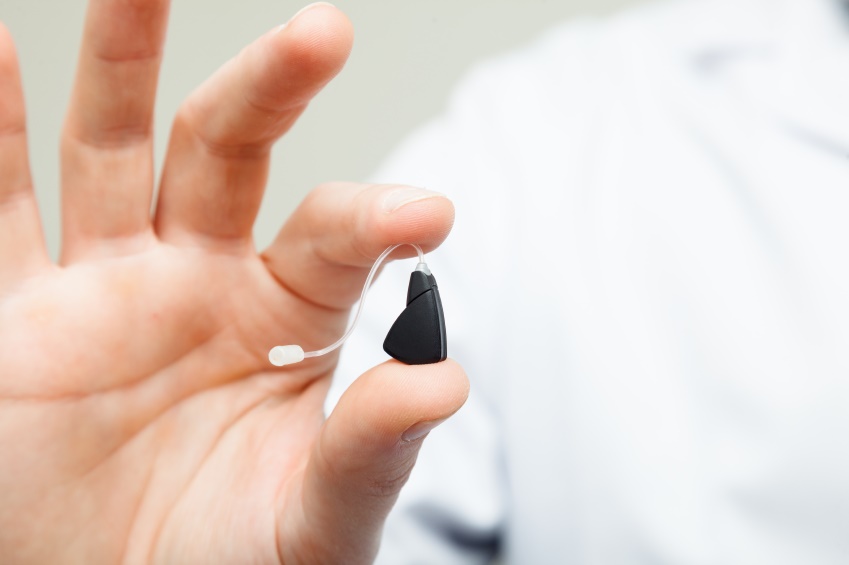
Hearing aid guides are not rare, but most are not exactly reader-friendly, either. Many are simply too long or complex, resulting in more perplexity instead of less.
My guess is that you’re much less interested in the physiology of hearing or in the ins and outs of acoustical engineering and a lot more interested in obtaining the most suitable technology at a fair price. Your objective is to hear better, not to read a 10-page manual.
If that represents you, then you’ll appreciate this simple guide to hearing aids. We’ll cover four small parts, and when we’re done, you’ll be set to work with your hearing care professional to discover the technology that’s best for you. Let’s get started.
How All Digital Hearing Aids Work
Selecting a hearing aid can seem overwhelming—there are a number of brands and seemingly endless factors to consider. But it’s not as complex as it seems. As you progress through this guide, bear in mind that all digital hearing aids function essentially the same way, and include these four basic parts:
- The microphone picks up environmental sound and directs it to the digital processor.
- The digital processor adjusts the sound signal according to the settings programmed by the hearing specialist. The customized sound signal is then sent to the amplifier.
- The amplifier increases the volume of the sound according to the programmed settings, amplifying only the frequencies the person has trouble hearing (while suppressing background noise). This signal is next delivered to the speaker.
- The speaker delivers the magnified sound to the ear, producing louder, clearer sound.
Additionally, all hearing aids contain a battery, volume and setting switches, and remote controls.
Hearing aids really only differ in two important ways: 1) style, and 2) advanced features. We’ll cover these in the next two sections.
Hearing Aid Styles
You have your choice of three main styles:
1. Behind-the-ear (BTE) hearing aids hook over the top of the ear and rest behind the ear. The case is then attached to an earmold in the ear canal by a piece of clear tubing. BTE hearing aids are simple to handle and maintain, typically have an extended battery life, and can manage severe hearing loss.
2. In-the-ear (ITE) hearing aids occupy the exterior part of the ear with a custom-molded shell. ITE hearing aids are smaller than the behind-the-ear hearing aids but bigger than the in-the-canal styles. This makes ITE hearing aids easier to handle than the smaller styles but less visible than the BTE style.
3. In-the-canal (ITC) hearing aids and completely-in-the-canal (CIC) hearing aids fit partly or entirely within the ear canal, making them almost or entirely invisible. ITC and CIC hearing aids are custom molded to the contours of the ear, and some can be worn for several months at a time.
When choosing a style, consider the tradeoffs among ease of use, battery life, and concealment. Your hearing care expert will help you prioritize your preferences and decide on the most appropriate style.
Hearing Aid Advanced Features and Accessories
Once you’ve settled upon the right style, you can determine which of the following features you need—and which you don’t.
- Directional microphones allow you to focus on the sounds and conversations directly in front of you while lessening the disruption of loud background noise.
- Telecoils, or T-coils, allow you to talk on the phone while cutting down on the static brought about by background noise.
- Environmental noise control allows you to optimize hearing based on your environment, for instance in a quiet room at home as opposed to in a bustling restaurant.
- Direct input to sound sources such as TVs, radios, computers, and music players allow for clear sound without background noise.
- Wireless connection to mobile phones turns your hearing aids into top quality wireless headsets. The hearing aid settings can be regulated from the phone (or smart watch), and sound can be wirelessly streamed straight from the phone to the hearing aids.
Optional accessories include cleaning systems, storage cases, ultraviolet sanitizers, battery-changers, and more. Your hearing care professional can help you decide on which you may need or want.
Choosing the Right Hearing Aids
Before investing in hearing aids, take these four steps:
- Find a trustworthy, local hearing care professional. Only professionals with adequate experience can examine your hearing accurately, which is essential for when it comes time to program, fit, and fine-tune your hearing aids.
- Focus on hearing aid styles and advanced features. Your choice of hearing aids will depend on your preference of style and function. Discuss these two facets with your hearing professional and your options will become manageable.
- Set a budget. Some would say that your hearing is priceless, but that doesn’t mean you have a limitless budget. With all of the hearing aid options available to you, you and your hearing specialist can find the right hearing aid at a reasonable price.
- Test drive your new hearing aids. Ask about trial periods and test out your new hearing aids. Work with your hearing specialist to establish realistic expectations and give your hearing aids a chance to work. Your persistence will be rewarded when you recognize the difference better hearing will make in your life.
And that’s it. What may seem like a complicated process is in truth easily workable, once you know how to prioritize your needs and limit your options. With the help of your local hearing care professional, you can find the most appropriate technology at the right price—so you can start enjoying all of the advantages of better hearing.
